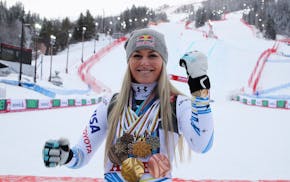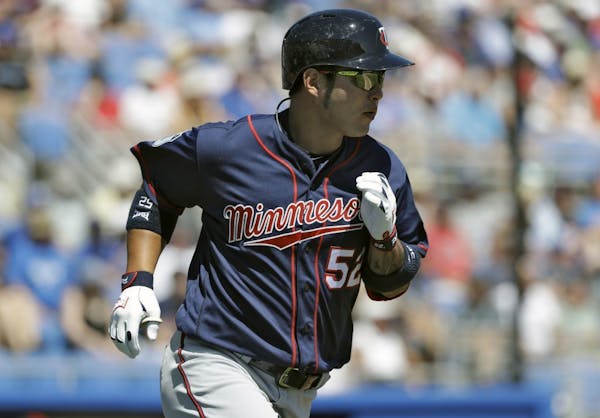The NCAA may soon file suit against the Minnesota Twins for copyright infringement, because the team's new bosses are perpetrating their own form of March Madness.
Thursday, Derek Falvey and Thad Levine are innovating the Opening Day experience. All you have to do to see the Twins' best slugger this spring is fly to Syracuse, N.Y., on April 6.
The bosses sent ByungHo Park to the minors, to convene with one of the team's most promising relievers this spring, Alex Wimmers. Park will star for the Rochester Red Wings in April while Twins manager Paul Molitor tries not to use the pitcher who replaced Park on the big-league roster.
The Twins' decision to head north with 13 pitchers and 12 position players leaves them with a weak designated hitter and an incomplete and unimpressive bench.
They kept on their big-league roster a Rule 5 draftee, Justin Haley, who looked awful this spring, and a reliever, Michael Tonkin, who made the cut only because he throws hard and is out of options, not because he inspired confidence this spring or in his recent big-league past.
They decided on 13 pitchers because they have little confidence their rotation, which ranked last in the big leagues in ERA last season and has not made any dramatic upgrades, will provide a reasonable number of innings.
The Twins are scheduled to have two days off in the first eight days of the season. They have a long reliever in the bullpen in Tyler Duffey. The 13th pitcher is highly unlikely to help them win a game. The 13th pitcher may barely be of use. Park may have, either with his bat or by freeing up Robbie Grossman to be a pinch hitter and substitute.
Park is not a complete or proven hitter, but he showed improvement this spring and he came to symbolize what this team hopes it will be about: promise deferred but finally fulfilled.
If Park had made the cut and produced, the lineup could have taken on a more intimidating look.
Instead, Grossman, a fourth outfielder on a bad team and probably a Class AAA player on a good team, will start the season as the everyday DH.
The most emblematic of the decisions was the one to keep Haley on the roster. In a way, Haley cost Park his job. If the Twins had decided to keep 12 pitchers, they could have kept Park as their DH and kept Grossman as an extra outfielder.
All Rule 5 draft picks are long shots. The Twins struck gold with Johan Santana (actually the product of a Rule 5 trade) and were bad enough when they acquired him to spend a roster spot on him while he learned to pitch. Haley shouldn't be compared to a mature Santana, but the decision to keep him was rooted in the same logic: If you're years away from winning, using a roster spot on a promising pitcher makes sense.
What that decision costs the Twins is an Opening Day lineup laced with intrigue.
If there is anything to be learned from these decisions, it is that the oldest lesson regarding spring training should be tattooed in reverse on the forehead of every baseball fan, so we can read it easily every March morning:
Spring training doesn't matter. At all.
It's not a dramatic competition for big-league jobs. The decisions on big-league jobs are determined by past performances and roster designations.
It's not a referendum on the quality of the team. The Twins looked exceptional in the spring of 2016, then produced the worst season in franchise history.
Results don't matter in March. Park revamped his swing, led the team in home runs and looked comfortable even against quality opponents. And he got replaced by Grossman.
Casual Minnesota fans often ask the Twins to merely occupy them until Vikings camp opens. After seeing the Twins' Opening Day roster, fans might ask the Vikings to start training camp in May.
Jim Souhan's podcast can be heard at MalePatternPodcasts.com. On Twitter: @SouhanStrib. • jsouhan@startribune.com

Souhan: Lindsey Vonn returns to U.S. Ski Team

Souhan: Jones isn't the best Vikings running back, but he might be the most likeable

Cashman is back, and he's money against the Jaguars

Souhan: The Sam Slide is here. How will the Vikings handle it?


